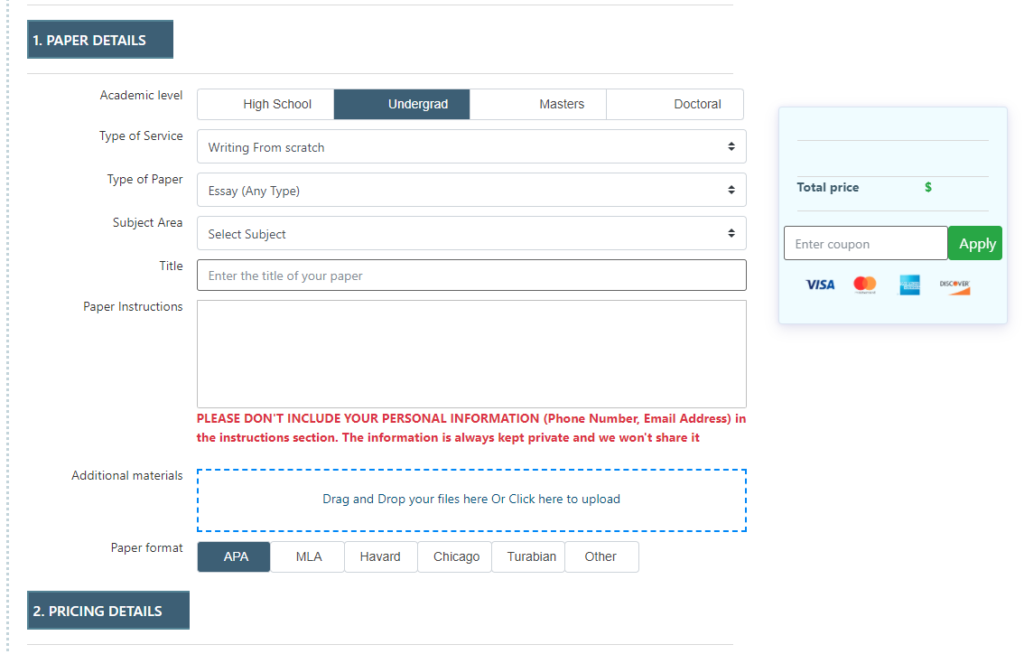Question 1. A nurse practitioner student is familiarizing herself with the overnight admissions to an acute medical unit of a university hospital. Which of the following patients would the student recognize as being least likely to have a diagnosis of antiphospholipid syndrome in his or her medical history?
A 66-year-old obese male with left-sided hemiplegia secondary to a cerebrovascular accident
A 90-year-old female resident of a long-term care facility who has been experiencing transient ischemic attacks
A 30-year-old female with a diagnosis of left leg DVT and a pulmonary embolism
A 21-year-old male with a diagnosis of cellulitis and suspected endocarditis secondary to intravenous drug use
Question 2. As part of his diagnostic workup, a 77-year-old man”s nurse practitioner has ordered blood work that includes ferritin levels. The man is very interested in the details of his health care and is unfamiliar with ferritin and its role. He asks his nurse practitioner to explain the significance of it and the rationale for testing it. Which of the following explanations by the nurse practitioner is most accurate?
“Ferritin is the activated and usable form of iron that your red blood cells can use to transport oxygen.”
“Ferritin is a stored form of iron that indirectly shows me whether you would benefit from iron pills.”
“Ferritin is a protein-iron complex that allows your red blood cells to make use of the iron that you consume in your diet.”
“Ferritin is the form of iron that is transported in your blood plasma to the red blood cells that need it.”
Question 3. A 24-year-old woman presents with fever and painful, swollen cervical lymph nodes. Her blood work indicates neutrophilia with a shift to the left. She most likely has:
A mild parasitic infection
A severe bacterial infection
A mild viral infection
A severe fungal infection
Question 4. A patient has been admitted to an inpatient medical unit of a hospital with an acute viral infection. The health care team providing care for the patient would recognize which of the following statements as an accurate description of the role of viruses in human infections?
Viruses have limited or absent genetic material of their own.
Some viruses are capable of transforming normal host cells into malignant cells.
Viruses are often implicated in cases of transmissible neurodegenerative disease.
Viruses require stimulation after a latent period before they are able to produce symptoms.
Question 5. Sputum samples from a patient with pneumonia contain an infective agent that has a peptidoglycan cell wall, expresses endotoxins, replicates readily in broth and on agar, grows in clusters, has pili, and does not stain when exposed to crystal violet. This pneumonia is most likely:
Chlamydial
Viral
Mycoplasmal
Bacterial
Question 6. A 60-year-old woman is suspected of having non-Hodgkin lymphoma (NHL). Which of the following aspects of her condition would help to rule out Hodgkin lymphoma?
Her neoplasm originates in secondary lymphoid structures.
The lymph nodes involved are located in a large number of locations in the lymphatic system.
The presence of Reed-Sternberg cells has been confirmed.
The woman complains of recent debilitating fatigue.
Question 7. A 30-year-old man has spent 5 hours on a cross-country flight seated next to a passenger who has been sneezing and coughing, and the man has been inhaling viral particles periodically. Which of the following situations would most likely result in the stimulation of the man”s T lymphocytes and adaptive immune system?
Presentation of a foreign antigen by a familiar immunoglobulin
Recognition of a foreign MHC molecule
Recognition of a foreign peptide bound to a self MHC molecule
Cytokine stimulation of a T lymphocyte with macrophage or dendritic cell mediation
Question 8. A couple who are expecting their first child have been advised by friends to consider harvesting umbilical cord blood in order to have a future source of stem cells. The couple have approached their nurse practitioner with this request and are seeking clarification of exactly why stem cells are valuable and what they might expect to gain from harvesting them. How can the nurse practitioner best respond to the couple”s inquiry?
“Stem cells can help correct autoimmune diseases and some congenital defects.”
“Stem cells can be used to regenerate damaged organs should the need ever arise.”
“Stem cells can be used as a source of reserve cells for the entire blood production system.”
“Stem cells can help treat some cancers and anemias, but they must come from your child himself or herself.”
Question 9. A 40-year-old woman who experiences severe seasonal allergies has been referred by her family physician to an allergist for weekly allergy injections. The woman is confused as to why repeated exposure to substances that set off her allergies would ultimately benefit her. Which of the following phenomena best captures the rationale for allergy desensitization therapy?
Repeated exposure to offending allergens binds the basophils and mast cells that mediate the allergic response.
Exposure to allergens in large, regular quantities overwhelms the IgE antibodies that mediate the allergic response.
Repeated exposure stimulates adrenal production of epinephrine, mitigating the allergic response.
Injections of allergens simulate production of IgG, which blocks antigens from combining with IgE.
Question 10. The blood work of a 44-year-old male patient with a diagnosis of liver disease secondary to alcohol abuse indicates low levels of albumin. Which of the following phenomena would a clinician be most justified in anticipating?
Impaired immune function
Acid-base imbalances
Impaired thermoregulation
Fluid imbalances
Question 11. A tourist presented to a primary care health clinic complaining of malaise, fever, and headache. She has subsequently been diagnosed with Rocky Mountain spotted fever, a pathology caused by Rickettsiaceae. Which of the followed statements best captures a characteristic trait of Rickettsiaceae?
They are eukaryotic.
They have both RNA and DNA.
They have a distinct spiral-shaped morphology.
They are neither gram-negative nor gram-positive.
Question 12. A nurse practitioner is providing prenatal care and education for a first-time expectant mother, 22 weeks” gestation, who has a diagnosis of a sexually transmitted infection. Which of the following statements by the expectant mother demonstrates an adequate understanding of vertical disease transmission and congenital infections?
“Gonorrhea and chlamydia pose the greatest risks of transmission from mother to child.”
“I know that my baby will need observation for HIV signs and symptoms in the weeks following my delivery.”
“My baby could become infected either across the placenta or during the birth itself.”
“Prophylactic immunization will reduce my baby”s chance of being born with an illness.”
Question 13. A 16-year-old female has been brought to her primary care nurse practitioner by her mother due to the girl”s persistent sore throat and malaise. Which of the following facts revealed in the girl”s history and examination would lead the nurse practitioner to rule out infectious mononucleosis?
The girl has a temperature of 38.1? (100.6?) and has enlarged lymph nodes.
Her liver and spleen are both enlarged.
Blood work reveals an increased white blood cell count.
Chest auscultation reveals crackles in her lower lung fields bilaterally.
Question 14. A 44-year-old female patient presents to the emergency department with abnormal bleeding and abdominal pain that is later attributed to gallblaIDer disease. Which of the following diagnoses would the medical team be most justified in suspecting as a cause of the patient”s bleeding?
Calcium deficiency
Vitamin K deficiency
Hemophilia B
Idiopathic ITP
Question 15. A nurse practitioner is teaching her colleagues about the role of cytokines in a variety of pathologies. Which of the following teaching points best captures an aspect of the functions and nature of cytokines?
“A particular cytokine can have varied effects on different systems, a fact that limits their therapeutic use.”
“Cytokine production is constant over time, but effects are noted when serum levels cross a particular threshold.”
“Most cytokines are produced by granular leukocytes, and different cells are capable of producing the same cytokine.”
“Cytokine actions are self-limiting in that activation of one precludes activation of other cytokines with similar actions.”
Question 16. Which of the following statements most accurately conveys an aspect of lymphatic system activity?
B and T lymphocyte development begins in the bone marrow and ends in the peripheral lymphoid structures.
B cells and macrophages are released from the bone marrow in their completed state.
Stem cells in the lymph nodes initiate and regulate the process of white cell synthesis.
Leukocytes bypass vascular circulation and are distributed instead by the lymphatic system.
Question 17. Following a course of measles, a 5-year-old girl developed scattered bruising over numerous body surfaces and was diagnosed with immune thrombocytopenic purpura (ITP). As part of her diagnostic workup, blood work was performed. Which of the following results is most likely to be considered unexpected by the health care team?
Increased thrombopoietin levels
Decreased platelet count
Normal vitamin K levels
Normal leukocyte levels
Question 18. A 22-year-old female who adheres to a vegan diet has been diagnosed with iron-deficiency anemia. Which of the following components of her diagnostic blood work would be most likely to necessitate further investigation?
Decreased mean corpuscular volume (MCV)
Decreased hemoglobin and hematocrit
Microcytic, hypochromic red cells
Decreased erythropoietin levels
Question 19. A 60-year-old male patient with an acute viral infection is receiving interferon therapy. The nurse practitioner is teaching the family of the patient about the diverse actions of the treatment and the ways that it differs from other anti-infective therapies. Which of the following teaching points should the nurse practitioner exclude?
“Interferon can help your father”s unaffected cells adjacent to his infected cells produce antiviral proteins that limit the spread of the infection.”
“Interferon can help limit the replication of the virus that”s affecting your father.”
“Interferon helps your father”s body recognize infected cells more effectively.”
“Interferon can bolster your father”s immune system by stimulating natural killer cells that attack viruses.”
Question 20. A nurse practitioner is explaining to a 40-year-old male patient the damage that Mycobacterium tuberculosis could do to lung tissue. Which of the following phenomena would underlie the nurse practitioner”s explanation?
Tissue destruction results from neutrophil deactivation.
Nonspecific macrophage activity leads to pulmonary tissue destruction and resulting hemoptysis.
Macrophages are unable to digest the bacteria, resulting in immune granulomas.
Neutrophils are ineffective against the Mycobacterium tuberculosis antigens.
Question 21. A patient presented to the emergency department of the hospital with a swollen, reIDened, painful leg wound and has been diagnosed with methicillin-resistant Staphylococcus aureus cellulitis. The patient”s nurse practitioner has ordered a complete blood count and white cell differential. Which of the following blood components would the nurse practitioner most likely anticipate to be elevated?
Basophils
Eosinophils
Platelets
Neutrophils
Question 22. A child has been diagnosed with thalassemia. Which of the following other health problems is the child at risk for?
Hypocoagulation
Iron and ferritin deficiencies
Splenomegaly and hepatomegaly
Neutropenia
Question 23. A 14-year-old boy has been diagnosed with infectious mononucleosis. Which of the following pathophysiological phenomena is most responsible for his symptoms?
The Epstein-Barr virus (EBV) is lysing many of the boy”s neutrophils.
Viruses are killing some of his B cells and becoming incorporated into the genomes of others.
The EBV inhibits the maturation of white cells within his peripheral lymph nodes.
The virus responsible for mononucleosis inhibits the maturation of myeloblasts into promyelocytes.
Question 24. A 66-year-old female patient has presented to the emergency department because of several months of intermittently bloody stools that has recently become worse. The woman has since been diagnosed with a gastrointestinal bleed secondary to overuse of nonsteroidal anti-inflammatory drugs that she takes for her arthritis. The health care team would realize that which of the following situations is most likely?
The woman has depleted blood volume due to her ongoing blood loss.
She will have iron-deficiency anemia due to depletion of iron stores.
The patient will be at risk for cardiovascular collapse or shock.
She will have delayed reticulocyte release.
Question 25. Which of the following phenomena would be least likely to result in activation of the complement system?
Recognition of an antibody bound to the surface of a microbe
The binding of mannose residues on microbial glycoproteins
Activation of Toll-like receptors (TLRs) on complement proteins
Direct recognition of microbial proteins








